Home> Company News> What Is A Hydraulic Main Pump & How Does It Work?
- AddressNorth Tan Street, Jinan,Shandong
- Factory Address123 Ubi Ave 3 #12-30 Frontier Singapore 408867
- Worktime9:00-18:00(Beijing time)
- Phone(Working Time)86 0531-8299 9952
Hydraulic main pumps are an integral component of hydraulic systems, serving the critical function of generating the necessary fluid pressure to power the system. Understanding how hydraulic main pumps work and their role in a hydraulic system is crucial for effective maintenance and troubleshooting.Hydraulic main pumps operate by drawing hydraulic fluid into the pump and then pressurizing it to create the force necessary to power the hydraulic system. Without a functioning hydraulic main pump, the system would not be able to generate the required pressure and would fail to operate effectively.In this article, we will discuss the components of hydraulic main pumps, how they work, common problems that can occur, and best practices for maintenance to ensure optimal performance. By understanding these key aspects of hydraulic main pumps, you will be equipped to maintain and troubleshoot hydraulic systems with confidence.

Components of Hydraulic Main Pump
Hydraulic main pumps are a key component in many hydraulic systems, responsible for creating the flow of fluid that powers various hydraulic tools and machinery. Understanding the main parts of a hydraulic main pump is important for anyone who works with hydraulic systems, as it allows for better troubleshooting and maintenance practices. Some of the main components of a hydraulic main pump include:
Inlet and Outlet Ports
The inlet port is where the hydraulic fluid enters the pump, while the outlet port is where the fluid exits the pump after being pressurized. The size and positioning of these ports can have a significant impact on the overall efficiency and performance of the hydraulic main pump.
Displacement Mechanism
The displacement mechanism is responsible for compressing the hydraulic fluid and creating pressure within the system. There are several different types of displacement mechanisms, including gear, vane, and piston designs, each with their own advantages and disadvantages depending on the specific application.
Pressure Relief Valve
The pressure relief valve is an essential safety feature of the hydraulic main pump, designed to prevent pressure from building up beyond safe levels within the system. If the pressure in the system exceeds a certain threshold, the relief valve will open, allowing excess fluid to bypass the pump and release the pressure.
Each of these components plays an important role in the overall operation of the hydraulic main pump. By understanding how they work together, hydraulic system operators can better troubleshoot and maintain their systems to ensure optimal performance and reliability.
How Does A Hydraulic Main Pump Work?
Hydraulic main pump operation and the different types of hydraulic main pumps. Understanding hydraulic main pump operation and its contribution to the overall hydraulic system is important for troubleshooting, maintenance, and repair purposes.
- Basic Hydraulic Main Pump Operation
- Step-by-step breakdown of the hydraulic main pump operation.
- Explanation of how fluid is drawn in, compressed, and expelled from the pump.
- Discussion of the importance of each stage of the hydraulic main pump operation.
- Types of Hydraulic Main Pumps
- Gear pumps: Description of gear pumps, including their design and operation.
- Vane pumps: Description of vane pumps, including their design and operation.
- Piston pumps: Description of piston pumps, including their design and operation.
- Comparison of different types of hydraulic main pumps, including advantages and disadvantages of each type.
- Factors That Affect Hydraulic Main Pump Performance
- Discussion of factors that can affect hydraulic main pump performance, such as temperature, viscosity, and pressure.
- Explanation of how these factors impact the efficiency and effectiveness of hydraulic main pumps.
- Discussion of how to maintain optimal hydraulic main pump performance.
- Troubleshooting Hydraulic Main Pump Issues
- Common issues that can arise with hydraulic main pumps, including leaks, contamination, and wear and tear.
- Strategies for troubleshooting and repairing common hydraulic main pump problems.
- Discussion of the importance of identifying and resolving hydraulic main pump issues quickly to prevent damage to the overall hydraulic system.
- Conclusion
- Recap of the importance of understanding hydraulic main pump operation for troubleshooting, maintenance, and repair purposes.
- Final thoughts on the role of hydraulic main pumps in overall hydraulic system performance.
Common Problems with Hydraulic Main Pumps
In any hydraulic system, the main pump is a critical component that can experience a range of problems over time. Some of the most common issues with hydraulic main pumps include leaks, contamination, and wear and tear.
Leaking is one of the most common problems with hydraulic main pumps. Leaks can be caused by a variety of factors, including damaged seals, gaskets, or o-rings. A small leak may not seem like a big deal, but it can lead to a loss of pressure and a reduction in overall system performance over time.
Contamination is another issue that can plague hydraulic main pumps. Dirt, debris, and other particles can get into the hydraulic fluid and cause damage to the pump and other system components. This can lead to clogs, overheating, and other problems that can compromise the performance of the entire hydraulic system.
Wear and tear is another common issue with hydraulic main pumps, particularly with older or heavily-used pumps. Over time, the various components of the pump can become worn down or damaged, leading to a decrease in performance or a complete failure of the pump.
When faced with these types of issues, it is important to take a systematic approach to troubleshooting and repairing the hydraulic main pump. This may involve taking the pump apart to identify the source of the problem, replacing damaged components, or cleaning and flushing the hydraulic fluid to remove contamination.
In some cases, it may be more cost-effective to replace the entire pump rather than attempting to repair it, particularly if the pump is old or has significant wear and tear. Regular maintenance and monitoring can help to identify potential issues with the hydraulic main pump before they become major problems, allowing for proactive repairs or replacement as needed.
Maintenance of Hydraulic Main Pumps
Hydraulic main pumps are a crucial component of hydraulic systems, and regular maintenance is essential to keep them functioning optimally. Neglecting maintenance can result in decreased pump efficiency, reduced system performance, and increased repair costs.
To maintain hydraulic main pumps, there are several best practices to follow. The first is to monitor fluid levels regularly. Hydraulic systems rely on fluid to operate, so it is crucial to ensure that the fluid levels remain at the recommended level. Low fluid levels can cause pump cavitation, which can lead to pump damage.
Another important aspect of hydraulic main pump maintenance is changing filters regularly. Filters remove impurities from the fluid and prevent contamination, which can cause damage to the pump and other system components. It is recommended to change filters every 500 hours of operation or as indicated by the manufacturer's guidelines.
Inspecting the hydraulic main pump for signs of wear and tear is also important. The pump's components, including the inlet and outlet ports, displacement mechanism, and pressure relief valve, should be checked for signs of damage or wear regularly. Any worn or damaged parts should be replaced promptly to prevent further damage to the pump.
Additionally, it is important to follow the manufacturer's recommended maintenance schedule, which typically includes regular inspections, fluid changes, and other preventive maintenance tasks. Regular maintenance can help identify potential problems early, prevent breakdowns, and increase the lifespan of the hydraulic main pump.
In summary, maintaining hydraulic main pumps is essential to keep hydraulic systems functioning optimally. Following best practices such as monitoring fluid levels, changing filters regularly, inspecting for wear and tear, and following the manufacturer's maintenance schedule can help prevent costly breakdowns and increase the lifespan of the hydraulic main pump.Hydraulic main pumps play a crucial role in the operation of hydraulic systems, and regular maintenance is essential to ensure they continue functioning optimally. In this article, we have explored the components of hydraulic main pumps, their operation, common problems, and best practices for maintenance.
Understanding hydraulic main pump operation is crucial for maintenance and troubleshooting purposes. These pumps have several critical components, including the inlet and outlet ports, displacement mechanism, and pressure relief valve. Each component plays a vital role in the operation of the pump, and it is important to understand how they work together to ensure the pump functions optimally.
Hydraulic main pumps operate by drawing in fluid from the reservoir, compressing it, and then expelling it to the rest of the hydraulic system. There are different types of hydraulic main pumps, including gear, vane, and piston pumps. Each type has its own unique advantages and disadvantages, and choosing the right type of pump for your system depends on factors such as the required flow rate, pressure, and fluid viscosity.

Common problems that can arise with hydraulic main pumps include leaks, contamination, and wear and tear. It is important to regularly monitor the pump for signs of these issues and take steps to address them promptly to prevent further damage. Troubleshooting and repairing common hydraulic main pump problems typically involves disassembling the pump, inspecting the components, and replacing or repairing any damaged parts.
To ensure hydraulic main pumps continue functioning optimally, regular maintenance is crucial. Best practices for maintenance include monitoring fluid levels, changing filters, inspecting for signs of wear and tear, and conducting routine maintenance checks. By following these practices, you can prevent more significant issues from arising and prolong the lifespan of your hydraulic main pump.
In conclusion, hydraulic main pumps play a critical role in the operation of hydraulic systems. Understanding their components and operation, as well as common problems and best practices for maintenance, is essential for anyone working with hydraulic systems. By following these practices, you can ensure your hydraulic main pump continues to function optimally and prevent more significant issues from arising.


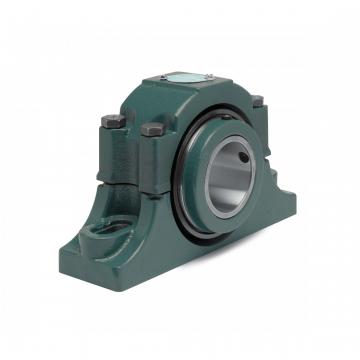 Mounted Tapered Roller Bearings P4B-EXL-212RE
Mounted Tapered Roller Bearings P4B-EXL-212RE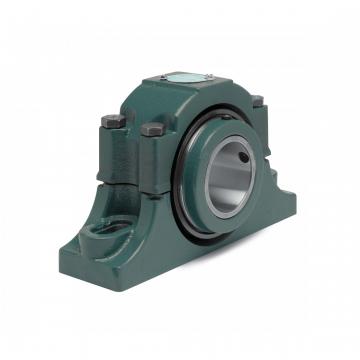 Mounted Tapered Roller Bearings P4B-EXL-400R
Mounted Tapered Roller Bearings P4B-EXL-400R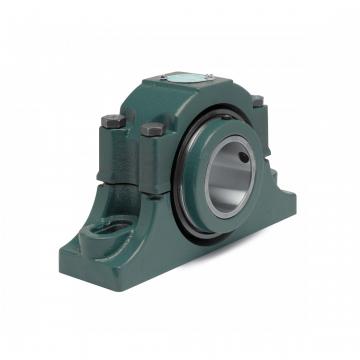 Mounted Tapered Roller Bearings P4B-EXL-400RE
Mounted Tapered Roller Bearings P4B-EXL-400RE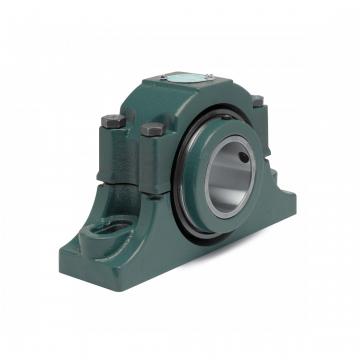 Mounted Tapered Roller Bearings P4B-EXL-315RE
Mounted Tapered Roller Bearings P4B-EXL-315RE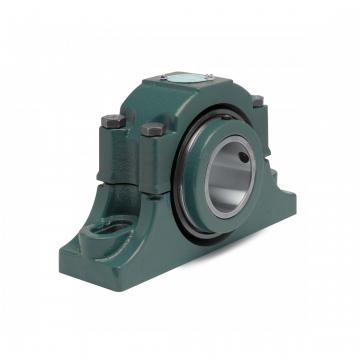 Mounted Tapered Roller Bearings P4B-EXL-207RE
Mounted Tapered Roller Bearings P4B-EXL-207RE